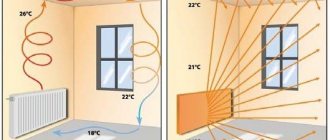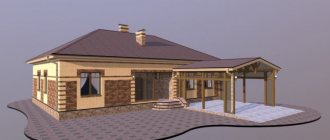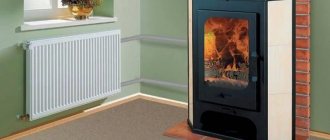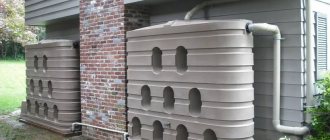Organized storage of shoes, clothing, leather goods, and textiles helps maintain order and cleanliness in an apartment or house. But often even a large, spacious wardrobe is not enough to optimize the space by neatly placing all things. Wardrobe systems that can be installed in both small and spacious rooms help solve the problem. These compact modules take up minimal space while offering excellent capacity. Other advantages of the designs include practicality, ease of storage, and the ability to quickly distribute clothes in the right order for economical use of space. Inspired by the idea of arranging such a system in your home, you should approach its choice wisely: decide on the appropriate type and its advantages, take into account the installation location, the size of the room, and personal preferences regarding design.
What are they?
The main task of any wardrobe storage system is convenient placement of things. The structures are used not only in houses or apartments, but are also purchased for public spaces, including offices and schools. Such furniture allows you to completely abandon standard cabinets and furniture walls, because inside the storage system you can fit not only clothes or linen, but also shoes, jewelry, bags, even documents.
The main requirements for a home wardrobe:
- rational use of space;
- compliance with the interior of the room;
- mobility, ease of assembly and dismantling;
- no obstacle to the movement of people.
As for public dressing rooms, they can consist of any number of modules (depending on the number of users). The main requirement in this case is increased strength of the frame. It must withstand occasional shocks and impacts.
The main frame and internal filling, that is, all kinds of storage systems for the dressing room, are made of different materials - metal, plastic, chipboard, wood. The structure is attached to the walls, ceiling or floor - these fixation features must be taken into account when performing repairs. Not all options are compatible with suspended ceilings, parquet, or plasterboard partitions.
Interesting solutions in the interior
Typically, storage systems are either located in a separate room or made as part of the room. Designers advise placing dressing rooms on loggias or using a “dead” zone in the apartment.
Today, dressing rooms can be equipped in pantries, niches or separate rooms with a window. In this case, things of the whole family will fit there. They usually install a mirror, an ironing board, poufs, and a dressing table, which is convenient. The room is used as a fitting room. It is quite cozy and you can hide from strangers.
The dressing room, as part of the room, is fenced off with a plasterboard wall. Sometimes with a screen or heavy curtain. Feature - an unused part is highlighted (a place under the stairs or a dead end in the corridor). It is recommended to decorate the dressing room in the same color palette as the rest of the room. But the partitions can be made in any way you like: mirrored, transparent, wooden or made of fabric, accordion-shaped, sliding.
Varieties
The most popular types of storage systems include:
- case or classic;
- mesh or cellular;
- panel;
- frame.
Any other wardrobe system is usually a modification of one of the main options. Column structures are considered frame structures, while modular structures are similar in features to cabinet structures. Separately, it is worth highlighting open, closed and hinged systems.
Hull
The cabinet wardrobe belongs to the classic systems. The assembly principle is to use modules fastened together with special ties. Their advantages include:
- affordable cost thanks to inexpensive materials - usually laminated chipboard or MDF;
- variety of color solutions;
- practicality, large capacity;
- convenient arrangement of things;
- the ability to fit the system into almost any interior.
A characteristic feature of a cabinet wardrobe is its large area, so it is only suitable for a spacious room.
Among the disadvantages is the difficulty of changing the design and self-assembly. To create a housing system, you will have to use the help of specialists.
Mesh
Mesh-type wardrobe systems are also called cellular. The design consists of baskets, shelves, nets and additional elements. It is compact and suitable for small spaces. The mesh design makes the system an optimal option for high-tech interiors. Aluminum or steel is used for manufacturing.
Among the advantages of cellular wardrobes:
- expanded storage options;
- availability of mesh elements (although a metal frame is more expensive than other options);
- many ways to arrange individual parts;
- stylish design.
Thanks to the simple installation and dismantling of any element, the system is considered the most convenient. Excess components are quickly removed, and additional ones are added. The drawers and shelves are located independently and are secured with special brackets. Among other advantages that make the cellular system popular are ventilation and accessibility of stored items. Passing air prevents clothes from packing; the mesh allows you to quickly navigate where this or that item is placed.
Panel
The open panel wardrobe system is classified as business class. Distinguished by their spectacular appearance, such models are quite expensive. The main part of the wardrobe is assembled from wooden panels fixed to the walls; shelves, drawers, and rods are installed on them. Panel systems are the best option for any interior, from classic to high-tech.
All lines are parallel, there are no vertical partitions, which allows you to perceive the wardrobe as a single whole. The mobility of the design is small compared to mesh options, but individual elements can still be changed, removed or added.
Assembling a panel storage system for a dressing room is easy to do yourself. The panels are attached to a flat wall surface; special self-tapping screws are used to install drawer fronts. Due to the complexity of manufacturing the elements, ready-made wardrobe systems are more expensive, but the costs are offset by the stylish design and lack of partitions.
Frame
Purchasing a wardrobe system frame kit is the most reliable way to store clothes. The basis of the design is metal profiles. Strength is further increased due to the special arrangement of the racks that act as supports. The remaining elements made of wood or metal - shelves and drawers - are attached to the frame.
How to place a corner dressing room in the bedroom, types of designs
The advantages of this solution:
- versatility of design that fits into any interior;
- high stability;
- quick assembly and dismantling;
- simple height adjustment of elements;
- visual lightness.
A frame wardrobe can be equipped with rods, open hanging shelves, and drawers. Sometimes the system includes small drawers for storing accessories and small items. Wood and metal allow such wardrobes to fit into high-tech or modern interiors.
Modular
Modular systems are called systems for storing things in dressing rooms, characterized by simple movement of elements without dismantling or damaging the structure. Instead of ties, assembly is performed with self-tapping screws and special fasteners, so changing the configuration of the system, including the width of shelves and racks, is more difficult.
Design Features:
- Side walls at shelves and drawers, providing separation of things.
- Favorable cost due to the use of MDF or chipboard sheets, natural wood or combinations of these options as the manufacturing material. The back wall can be made from fiberboard.
- The need to carefully consider the internal structure of the cabinets, since it cannot be changed after assembly.
Modular systems are chosen due to their affordable cost and easy assembly. More things can be placed inside wardrobe rooms than in other types of structures.
The modular wardrobe system is suitable only for modern interiors and does not fit into the classic style.
Open and closed
Depending on the placement method, wardrobes can be closed or open. As for the first ones, they are characterized by the presence of partitions used to divide the system into several zones. The area of such structures is quite large - sometimes they occupy an entire room or niche. But inside the wardrobe, for which sliding doors are usually installed, you can change clothes. The materials used to make such structures are wood, chipboard and MDF, and the style is almost any.
Open wardrobe systems are a complex of cabinets and shelves, usually located in living rooms or bedrooms. Among the advantages of an open wardrobe:
- placing things in any order convenient for users;
- minimum occupied space;
- the ability to fit an open wardrobe system into the most complex interior;
- easy assembly and ability to change configuration.
Open wardrobe systems are often used for schools, hospitals or offices, although they are also well suited for a modern style apartment.
Open
Closed
Columned
The column design differs from the frame wardrobe by the obligatory use of metal elements - pipes, which rest simultaneously on the ceiling and floor. The material for them is usually aluminum. The designs perfectly complement the modern interior. To complete aluminum wardrobe systems, fastenings for drawers and shelves are used; they can be made of MDF or wood.
Advantages:
- the ability to quickly assemble and easily dismantle metal wardrobe systems, which allows them to be used by people who often change their place of residence;
- a small space occupied by a wardrobe - you can install it in a room, hallway or hall;
- structural strength, ability to withstand heavy loads.
Disadvantages include the complete absence of doors and walls. Anyone who has previously used closed systems and did not maintain perfect order inside will have to get used to this design for a long time. The column system is chosen mainly by perfectionists who always carefully store their clothes.
Mounted
Another way to store clothes and shoes is hanging wardrobe systems. Their peculiarity is the presence of many shelves and baskets, which are the basis for the wardrobe. The elements are complemented by classic barbells, shoe storage structures and trouser holders. The system is easily expandable with additional accessories and fits into any modern interior.
The use of such a wardrobe system kit ensures constant ventilation of things. Open storage makes it easy to find the clothes you need. The cost of the structure is relatively low, and it is easy to install - installation does not require the help of specialists.
Advantages and disadvantages of the IKEA system
The main advantage of Swedish furniture is the ability to arrange it in the dressing room at your own discretion. Racks and shelves can be chosen in any size, taking into account the storage of miniature or voluminous items. Another advantage of IKEA is its reasonable cost, ease of ordering basic parts, and high functionality.
Universal wardrobes from IKEA will fit perfectly into rooms of any size. A space in a corner or along a wall is suitable for them. The simple design allows you to use all kinds of rails, rods, baskets and drawers as an addition.
If you are about to change your place of residence quickly, there is no point in carrying out a major installation of storage systems. You can simply use mobile dressing rooms from IKEA “Brame”, “IKEA PS”. Using the planner on the manufacturer's website, you can easily select a model and create your own dressing room project. It is enough to choose a design, indicate the dimensions of the room and the sizes of the modules, the presence of auxiliary elements.
According to consumer reviews, IKEA walk-in closets have some disadvantages. Mostly complaints are received about the unsatisfactory quality of the materials and fittings. Negative reviews also concern the insufficient selection of door options. Some owners of cabinet wardrobes complain about an unpleasant odor from the structure after assembly.
Structural elements
In addition to the base of the system (frame), additional components are used for assembly. Such elements include rods, shelves, drawers, boxes. Not so popular, but also often used, are trousers. All of the listed methods of storing things for a dressing room have their own characteristics, and most importantly, parameters.
Bars and pantographs
The main elements of the wardrobe system include a bar on which hangers are placed. Part parameters are selected according to the size of the internal space. The length is equal to the width of the compartment in which the bar is installed, and it should be within 80–90 cm. The placement height depends on the items being stored:
- for coats, fur coats, long jackets or dresses - no less than 165 cm;
- for shirts, blouses and other short clothes - about 100–150 cm;
- when installing rods in two tiers for storing short items - 100 cm between them.
Types of wardrobe hangers, reasons for popularity
Pantographs are used in spacious and fairly high storage systems for dressing rooms. These elements allow horizontally located rods to be lowered or raised to the upper tier.
In shallow cabinets, it is better to install a retractable rod instead of a pantograph.
Shelves
Shelves are considered one of the main elements of most wardrobe storage systems. They are made from MDF or laminated chipboard - lightweight, relatively inexpensive and durable materials. The shelf can withstand a lot of weight and allows you to place a lot of things. Glass and plastic models are chosen for lightweight small items, mesh models are chosen for shoes, suitcases or bags.
Recommended shelf sizes:
- depth - within 35–60 cm (depending on the depth of the system itself);
- width - from 40 to 100 cm, if the size is more than 80 cm, it is recommended to provide a partition at the bottom to avoid sagging;
- The height distance between the shelves is 30–40 cm.
The element can be retractable, folding or removable. The most popular first option. Unlike a drawer, a folding shelf similar in operating principle provides not only open access, but also the ability to easily find the things you need in the wardrobe.
Retractable
Folding
Removable
Boxes
Mesh or closed drawers are components for wardrobe systems, suitable for storing clothes and all kinds of accessories (gloves, belts). The elements are secured using brackets, and special guides are used for movement. Locking mechanisms help prevent the drawers from completely rolling out.
The size and number of drawers depend on the needs of the wardrobe owner:
- the optimal width of the element is from 40 to 70 cm;
- height - from 15 to 40 cm;
- distance above floor level - 110–140 cm.
The use of these pull-out wardrobe storage systems is recommended for accessories or decorations that need to be protected from dust.
To ensure that there is always order inside the drawers and that every item is in its place, dividers are used - usually made of the same material.
Mesh
Closed
Trouser hangers
Pants are also used as components for wardrobe systems. They are several parallel rods fixed on one side. The vertical arrangement allows you to store trousers, scarves, ties or scarves in perfect condition, saving time on ironing. The elements can be foldable, in which case they take up very little space inside the system.
In most respects, the skirt is no different from the trouser. The only difference is the greater thickness of the rod and the presence of special clips that hold the skirts vertically. Both types of hangers are placed at a height of at least 600 mm from the floor of the wardrobe system; their width is equal to the compartment in which they are located - usually no more than 800 mm.
Baskets and boxes
The sizes and colors of boxes (baskets) depend on the type of system and its purpose. They are made from plywood, cardboard or plastic. The type of elements usually corresponds to the design of the system, but may differ to obtain original design solutions. The main advantage of the basket is the ability to immediately see what is inside. At the same time, you can place things of any size in the box.
The width of baskets and boxes is usually in the range of 25–90 cm. The parameters should be slightly smaller than the shelves on which they are installed. Depth - from 8 to 28 cm. Height - no more than 38–40 cm. If we are talking about cellular baskets, the dimensions of square cells can start from 2 x 2 mm and end at 20 x 20 mm.
The nuances of storing shoes
As a rule, the place to store boots and other footwear is chosen based on its quantity, as well as based on the size of the dressing room itself. Today the following structures are used for these purposes:
- hangers with clips suitable for hanging boots;
- checkered lattice for women's shoes with heels;
- inclined shelves are the advantages of such shoe systems in saving space.
If the space of the room allows, you can allocate separate closets for summer and winter pairs of shoes.
Drawers can also be used to store shoes. Although such racks take up more space compared to shelves, they hide shoes well from dust and prying eyes. In deep cabinets, pull-out shelves are used, allowing you to quickly find the right pair.
The width of the compartment depends on the size of the shoes installed on it. Recommended boundaries are from 60 to 80 cm. The depth of the sections should be at least 25 cm, on average about 40 cm. The height distance between the shelves is 20 cm for shoes without heels, 30 cm if they are available.
Hangers with clips
Checkered grilles
Sloping shelves
Pull-out shelves
Shelves with closed drawers
Several shelves instead of a rack
The workplace is one of the “weak” places in a small apartment. Usually there just isn't enough space for it. But if you manage to squeeze in even a small bingo table, you're a winner! Because you no longer have to look for a place for a shelf for books and documents. Just hang several shelves on top of each other - a storage system that does not take up extra space is ready.
Photo: www.lansfast.se
How to create the perfect dressing room
When creating a storage system in a dressing room with your own hands, you start with planning and analyzing its features. The number of wardrobe users is taken into account - it is advisable to provide a separate compartment for each family member. It is determined what exactly will be stored in the system - only outerwear, hats and shoes, or also jewelry, equipment, pillows, suitcases, linen. Items are sorted for storage - some will be placed on hangers, others will be in drawers and on shelves. The length of trousers, dresses, jackets, fur coats is measured - the height of the compartments will be selected based on this parameter. As for the width, it is determined by the number of things.
How to arrange a dressing room in the bedroom, ideas and tips from designers
Wardrobe drawings and diagrams are drawn up by hand on a scale of about 1:10. For those who love innovative solutions, there is a special design program. It allows you to plan your wardrobe in 2D or 3D projection. Independent development allows you to avoid design errors and save money by ordering a project from specialists.
When creating a diagram and determining the size of wardrobe systems, we are guided by the following principles:
- first, places are allocated for large items, including outerwear;
- hats, suitcases and blankets are placed on the uppermost shelves (mezzanines), shoes - in the lower or side compartments;
- outerwear should be placed openly;
- things that are worn constantly should also be visible - on rods or in drawers that are located closest to others;
- the height of the wardrobe system elements is selected depending on the size of the items stored in them;
- In front of the retractable elements, there should be a space that is enough for retraction - usually this is at least 50 cm.
You can design a place for an ironing board in the design. A compartment is allocated for it, the width of which must be at least 200 mm. The spacious dressing room has enough space for mirrors. It is advisable to install one such element in full height and a second one, 2 times smaller in height, to assess your rear view.
The number of wardrobe users is taken into account
The width of the shelves is determined by the number of things
You can design a place for an ironing board in the design
Where can I buy?
Purchases are made both in special specialized stores, supermarkets, and in online stores. The main sites are shown in the table.
| Firm | website |
| Elfa | https://www.elfatrade.ru |
| Aristo | https://aristo1.ru https://aristo-sale.ru |
| Ikea | https://ikea-vsem.ru |
| Element Systems | https://101garderob.ru/gotoviye-garderobniye-systemy/element-systems/ |
| AB PRINT (Latvia) | https://www.komplekttorg.ru/category/garderobnaja-sistema-stark/ https://101garderob.ru/gotoviye-garderobniye-systemy/stark/stark-classic |
Self-production from components
To create a future wardrobe system, you can choose ready-made solutions or design and then assemble it yourself. If the latter option is preferred, you can take a “Joker” type system, consisting of chrome-plated pipes with a diameter of 2.5 cm, connecting elements made of glass, chipboard and durable plastic.
The process of making a wardrobe step by step is as follows:
- The pipes are cut to size using a hacksaw.
- The basis for the system is being prepared - a panel 2.7 m wide and 0.5 m deep.
- Plastic legs are attached to it, increasing the load-bearing capacity of the system.
- A 0.1 m high plinth strip is added to the front legs.
- Vertical racks are installed - they are attached to the base of the system.
- A stiffening rib 0.3 m high and 2.7 m long is mounted - a horizontal wall 2.7 m wide and 0.482 m deep is screwed to it.
- The unit is reinforced using mounting angles. The stiffener is fixed with dowels to the wall. Vertical posts are attached to the horizontal.
- Shelves made of chipboard are mounted to pipes using double-sided shelf holders.
- In the middle section, one shelf is installed - in the upper and lower parts. Bars for hangers are fixed between them.
An important element of a prefabricated wardrobe is the compartment for drawers. This module can be made autonomous, with its own walls and bottom. When determining the width of the drawers, it is necessary to take into account the space taken up by the shelf holders. The final stage is the installation of chrome-plated railing pipes, which perfectly complement the metal pipes of the Joker system.
Cut pipes to size
Prepare the base of the system, attach the legs, install the plinth
Install vertical posts
Install the stiffener, screw the horizontal wall
Cut and install shelves
Install additional shelves, fix the bar for hangers
Add a module with drawers
Wardrobe system in the interior
Review of manufacturers
Wardrobe systems are manufactured by hundreds of furniture factories. However, the products of some brands are of higher quality. The best solutions are offered by the following brands:
- Eureka - lightweight Italian Stilos wardrobes made of aluminum profiles and Austrian fittings.
- Poliform - Italian Graffiti wardrobes, multi-leaf closed structures with a minimalist design and compact dimensions.
- Besana is an elite modular Drive system made from wood materials.
- "Leroy Merlin" - high-quality mesh, frame and cabinet structures that save space and are also suitable for small spaces.
- Schonbuch are popular German wardrobe systems with modern design and maximum functionality.
- "Aristo" - open modular systems made in Russia.
The Swedish brand Elfa produces modular universal designs with good ventilation. A wooden or metal system from IKEA stands out among others due to its compactness, affordable cost, and easy assembly. By choosing the Chinese brand Larvij, the buyer receives not only a convenient, functional, but also an aesthetically attractive solution for storing clothes.











